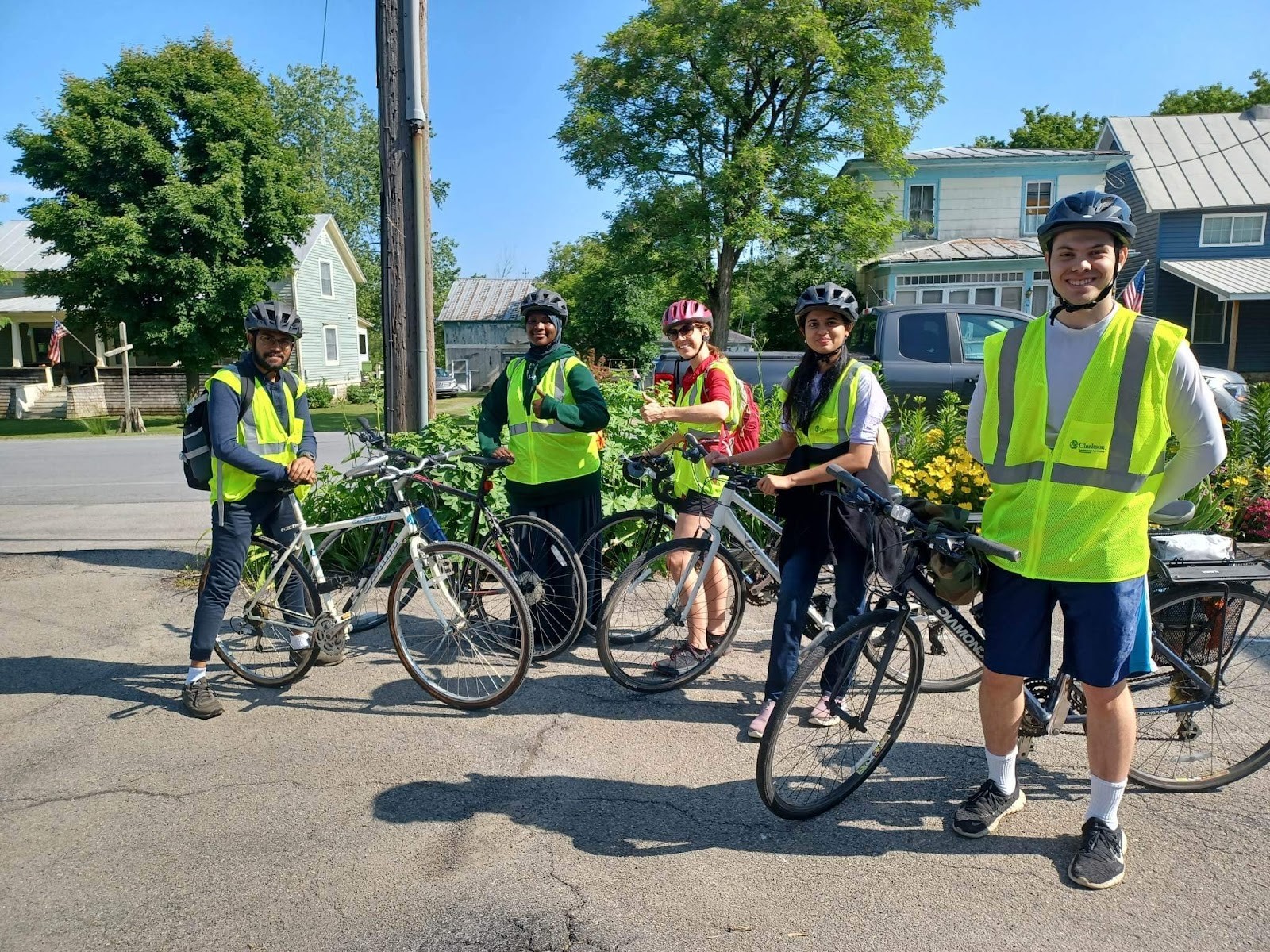Clarkson University's Construction Engineering Management Program Addresses Wildlife Conservation Through Wildlife Connectivity Project
Graduate and undergraduate students working in Clarkson University's Construction Engineering Management Consulting Group (C3G) are making significant strides in wildlife conservation through their pre-professional service and partnership with the Algonquin to Adirondacks Collaborative (A2A). The project focuses on studying the impact of roadkill on local wildlife populations and ecosystems in the Algonquin to Adirondacks corridor, specifically along New York State Routes 12 and 37.

Working with the Algonquin to Adirondacks Collaborative (A2A), the C3G team composed of graduate students Sravani Boddepalli, Karthik Thota, Anuj Rajendra Patil, and a number of undergraduate students, embarked on a comprehensive survey along Route 12 and Route 37 this summer to study wildlife mortality and identify crucial wildlife crossing areas. They used GIS, mapping, georeferencing, and other tools to collect and analyze data on roadkill incidents.
In addition, several students were formally trained and certified as lead observers for the North Atlantic Aquatic Connectivity Collaborative (NAACC) in order to assess, map, measure, and record wildlife passability scores for all bridges and culverts along their study route. NAACC is a network of individuals from universities, conservation organizations, and state and federal natural resource and transportation departments focused on improving ecological connectivity across a thirteen‐state region, from Maine to Virginia and works in collaboration with A2A. Through this project, Clarkson students hope to contribute positively to conservation efforts and safeguard the natural ecosystems within the region.
"The A2A Connectivity Project is a tangible example of how Clarkson’s engineering and data science expertise can be woven into interdisciplinary real-world projects through deep community partnerships addressing and solving environmental issues that contribute to the preservation of our region's natural beauty. Our students, spending countless hours biking through the area, exemplify their dedication to this cause," stated Dr. Erik Backus, Director of Clarkson’s Construction Engineering Management Program within the Department of Civil and Environmental Engineering.
The A2A Roadkill Survey's statistics reveal valuable insights:
In just 15 survey days on a 24 mile stretch of Routes 12 and 37, the team documented a total of 794 road killed animals.
Route 12: Frogs (178), snakes (28), turtles (17), birds (15), larger mammals (10), small mammals (1), unknown species (8)
Route 37: Frogs (394), snakes (27), turtles (68), birds (31), larger mammals (12), small mammals (11), unknown species (2)
Notably, a high incidence of frog roadkill on both routes highlights the need for amphibian conservation efforts. Improving highway passability for turtles is also critical; one of the many turtle roadkills identified was a NY State Endangered Blanding’s turtle. The NY Department of Transportation is also supporting the project by collecting data on the roadkill they collect in their regular course of work along these routes. Once their data is added, these numbers will increase. These findings provide information for targeted strategies to reduce roadkill and enhance road safety, informing necessary decision-makers, conservation organizations, and road authorities to collaborate on creating safer road environments while also preserving biodiversity.
Sravani Boddepalli, a master’s student in Clarkson’s Data Science program, is the project manager and expressed, "The A2A Roadkill Survey focuses on the Algonquin to Adirondacks region, specifically Route 12 and Route 37. This comprehensive survey provides crucial insights into wildlife mortality along these highways, making them primary locations for wildlife to travel between the Canadian boreal forests and the Adirondacks. By collecting and analyzing data on roadkill incidents, the survey aims to identify important wildlife crossing areas and promote conservation efforts in this biodiverse region."
Kate Cleary, Assistant Professor at SUNY Potsdam and Vice President of the Algonquin to Adirondacks Collaborative, is the principal researcher on the grant that funded this C3G project. The roadkill surveys are part of a larger ongoing project aimed at mapping wildlife connectivity across the entire A2A corridor.
“Our collaboration with C3G has been critical to the success of this project," Cleary said. "The students are enthusiastic and hard working and the C3G support team provided the critical infrastructure that A2A lacks as a small non-profit organization. We are also grateful for the support A2A has received from the Nature Conservancy, the National Park Service, the Pumpkin Hill Foundation, and the NY Department of Transportation - without them this important work for wildlife would not be possible.”
For more information about Clarkson University Construction Engineering Management Consulting Group (C3G) visit https://sites.google.com/clarkson.edu/clarkson-c3g/.
About the Algonquin-to-Adirondack Collaborative:
The Algonquin-to-Adirondack Collaborative is a multidisciplinary initiative dedicated to preserving biodiversity and promoting wildlife conservation across the Algonquin to Adirondacks region. Through research, collaboration, and community engagement, the collaborative works towards creating a sustainable coexistence between humans and wildlife. For more information about the Algonquin-to-Adirondack Collaborative visit www.a2acollaborative.org/.
